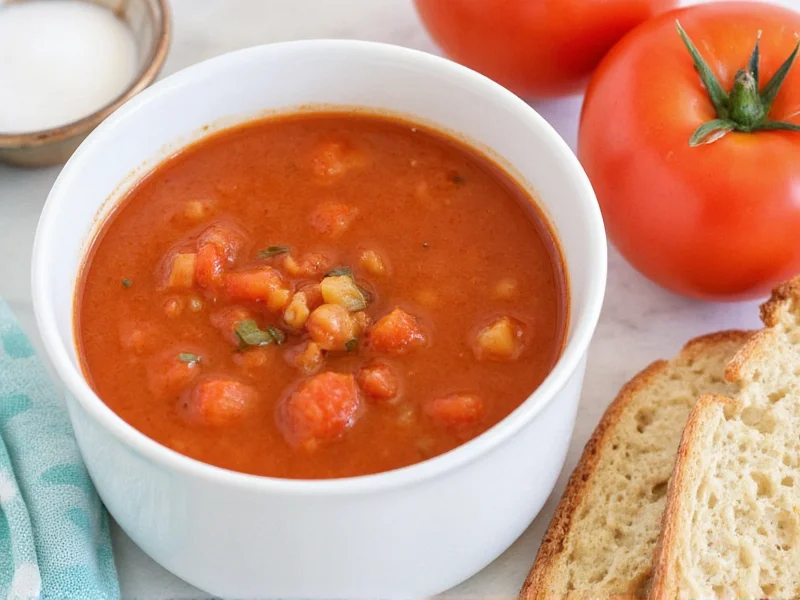Transforming basic canned tomato soup into a gourmet meal requires minimal ingredients and effort. While many home cooks reach for the can opener when short on time, few realize how easily they can elevate this pantry staple into something extraordinary. The secret lies in understanding the flavor limitations of canned soup and knowing precisely which ingredients compensate for them.
Why Canned Tomato Soup Needs Enhancement
Commercial canned tomato soup often contains high sodium levels, artificial preservatives, and lacks the depth of flavor found in homemade versions. The tomatoes themselves are typically processed at peak ripeness then preserved, which affects their natural sweetness. By adding just a few fresh ingredients, you can balance these shortcomings while maintaining the convenience that makes canned soup appealing.
Essential Ingredients for Elevated Canned Tomato Soup
Before reaching for that can opener, gather these pantry staples that transform ordinary canned tomato soup into something special:
| Ingredient | Function | Recommended Quantity |
|---|---|---|
| High-quality canned tomatoes | Base flavor foundation | 1 (28-ounce) can |
| Yellow onion | Adds natural sweetness | 1 small, finely diced |
| Fresh garlic | Provides aromatic depth | 2 cloves, minced |
| Extra virgin olive oil | Carries flavors, adds richness | 2 tablespoons |
| Fresh basil | Counteracts acidity | 3-4 leaves |
Step-by-Step Preparation Guide
Follow these professional techniques to create restaurant-quality tomato soup from canned ingredients:
1. Build Flavor Foundations
Heat olive oil in a medium saucepan over medium heat. Add diced onions and a pinch of salt, cooking until translucent (about 5 minutes). Add minced garlic and red pepper flakes, stirring constantly for 30 seconds until fragrant but not browned. This aromatic base creates the flavor foundation that most canned soups lack.
2. Incorporate Canned Tomatoes Properly
Add the entire can of tomatoes (including juice) to the pot. Use a wooden spoon to break up whole tomatoes. Many home cooks make the mistake of draining canned tomatoes, but the liquid contains valuable flavor compounds. Stir in 1 cup of vegetable broth to adjust consistency.
3. Simmer for Flavor Development
Bring the mixture to a gentle simmer, then reduce heat to low. Cover and cook for 15 minutes, stirring occasionally. This brief cooking time allows flavors to meld without overcooking the tomatoes, which can create bitterness. Avoid boiling, as high heat degrades tomato flavor.
4. Blend to Perfect Texture
Remove the pot from heat and carefully transfer to a blender. Alternatively, use an immersion blender directly in the pot. Blend until completely smooth—this step is crucial for achieving that velvety restaurant texture. For safety, leave the center cap off the blender and cover with a towel to allow steam to escape.
5. Final Flavor Adjustments
Return the blended soup to the pot over low heat. Stir in 2 tablespoons of heavy cream or coconut milk for dairy-free option. Add fresh basil leaves and a teaspoon of balsamic vinegar to balance acidity. Season with salt and freshly ground black pepper to taste. The vinegar enhances tomato flavor without making the soup taste sour.
Customization Options for Different Dietary Needs
This versatile base recipe adapts easily to various preferences:
- Vegan version: Substitute cream with coconut milk and use vegetable broth
- Low-sodium option: Use no-salt-added tomatoes and homemade broth
- Protein boost: Stir in ½ cup white beans after blending for added nutrition
- Spicy variation: Add ¼ teaspoon smoked paprika with the garlic
Avoiding Common Canned Soup Mistakes
Even experienced cooks make these errors when working with canned tomato products:
- Over-reducing: Simmering too long concentrates acidity—15 minutes is sufficient
- Using dried basil: Fresh basil provides brighter flavor that complements canned tomatoes
- Skipping the cream: A small amount balances canned tomato's sharpness
- Adding sugar unnecessarily: Use vinegar instead to balance acidity naturally
Storage and Reheating Techniques
Proper storage maintains flavor quality for future meals:
- Cool completely before storing in airtight containers
- Refrigerate for up to 4 days or freeze for 3 months
- When reheating, add a splash of broth if soup has thickened
- Never boil when reheating—gentle simmer preserves flavor
Why This Method Works Scientifically
The culinary science behind this enhanced canned tomato soup recipe involves several key principles. The Maillard reaction during onion sautéing creates complex flavor compounds that canned soup lacks. Fresh garlic contains allicin, which degrades during canning but provides aromatic depth when added fresh. The small amount of acid from balsamic vinegar actually enhances the perception of tomato flavor through sensory science principles, while cream emulsifies the soup for a richer mouthfeel. Understanding these elements transforms a simple can opener meal into something worthy of a chef's kitchen.
Perfect Pairings for Your Homemade Canned Tomato Soup
Elevate your meal with these complementary sides that work particularly well with enhanced canned tomato soup:
- Grilled cheese sandwich with sharp cheddar and gruyere
- Crusty artisan bread with herb-infused olive oil
- Simple arugula salad with lemon vinaigrette
- Garlic roasted croutons for added texture











 浙公网安备
33010002000092号
浙公网安备
33010002000092号 浙B2-20120091-4
浙B2-20120091-4